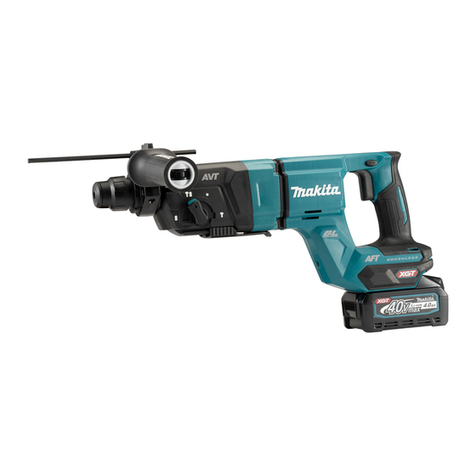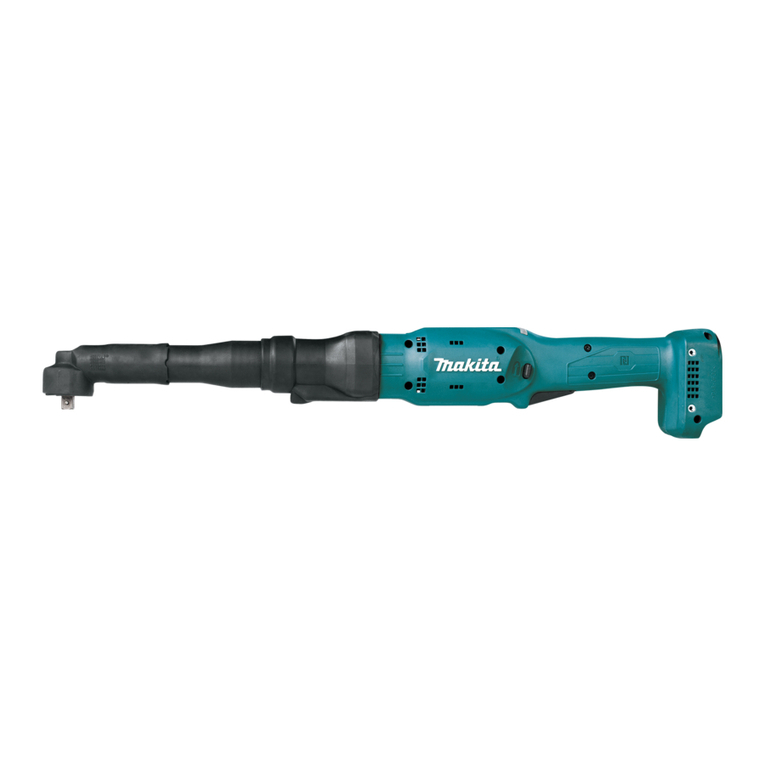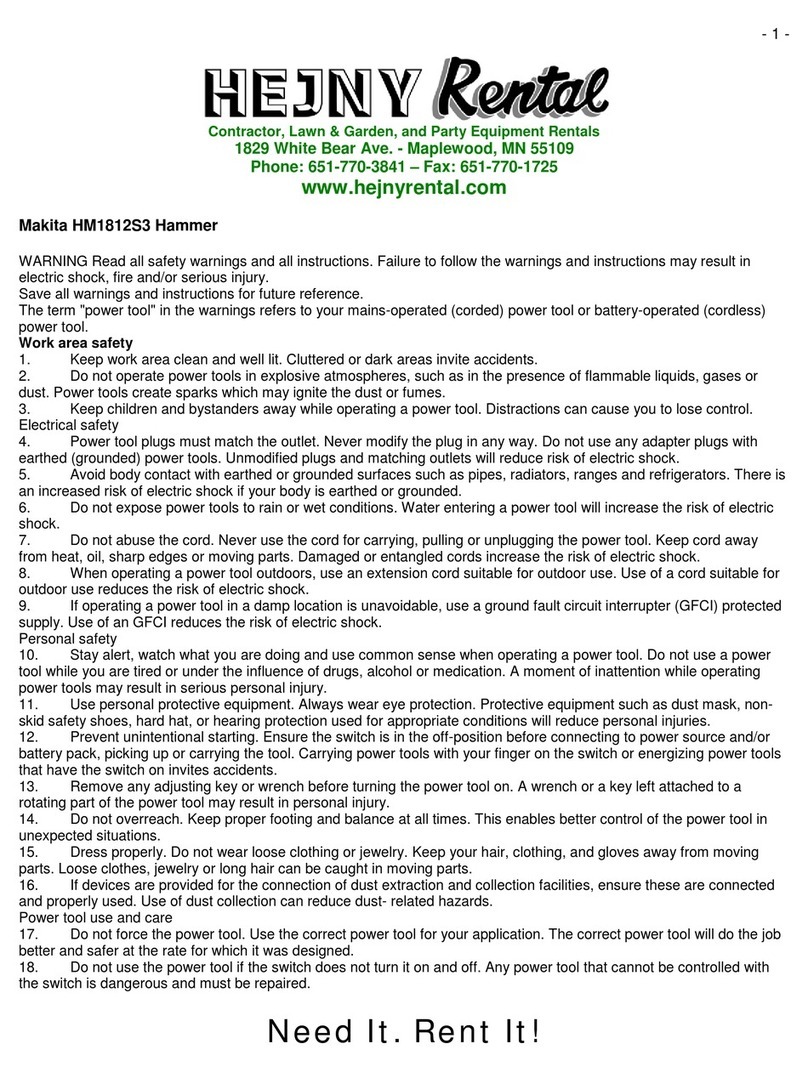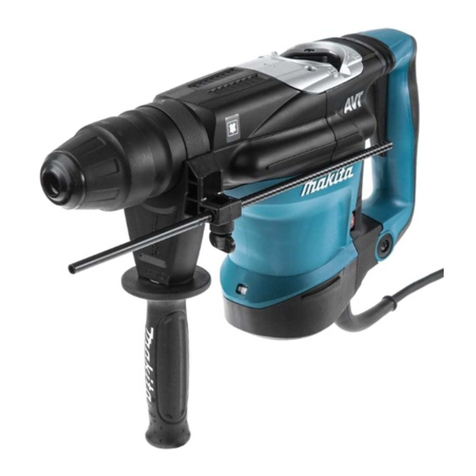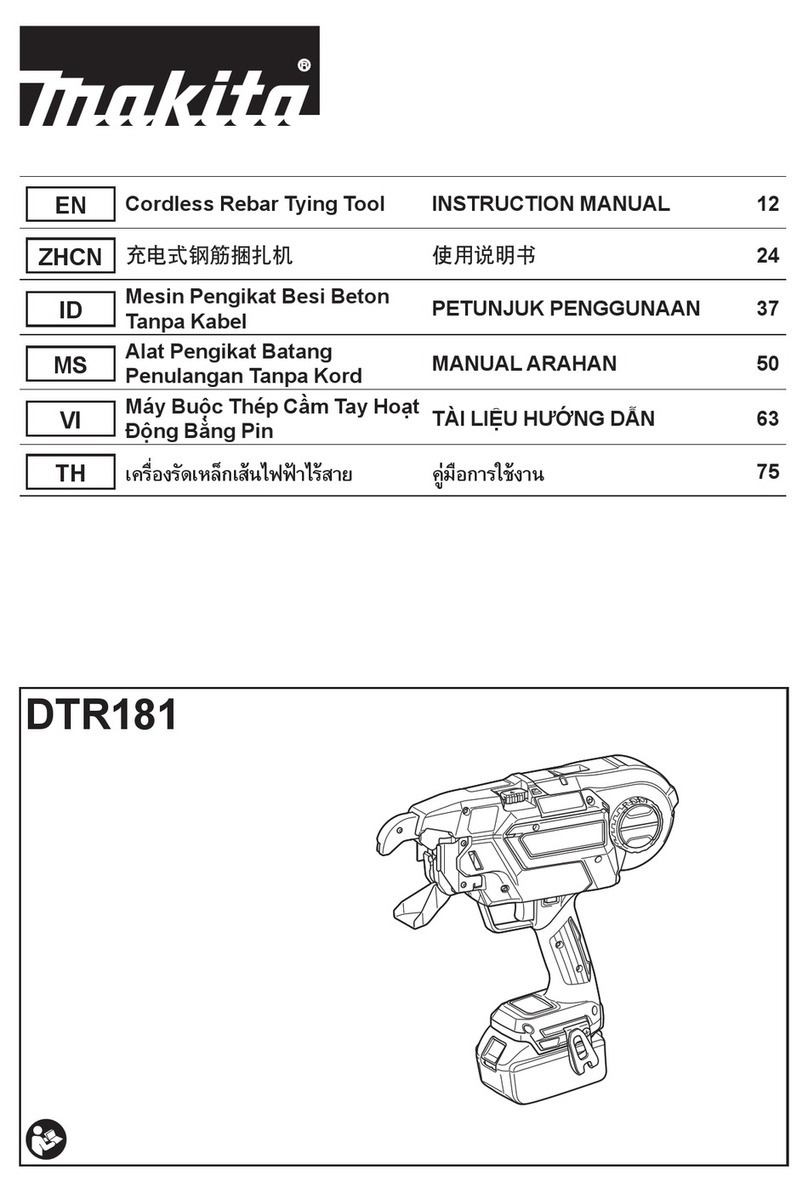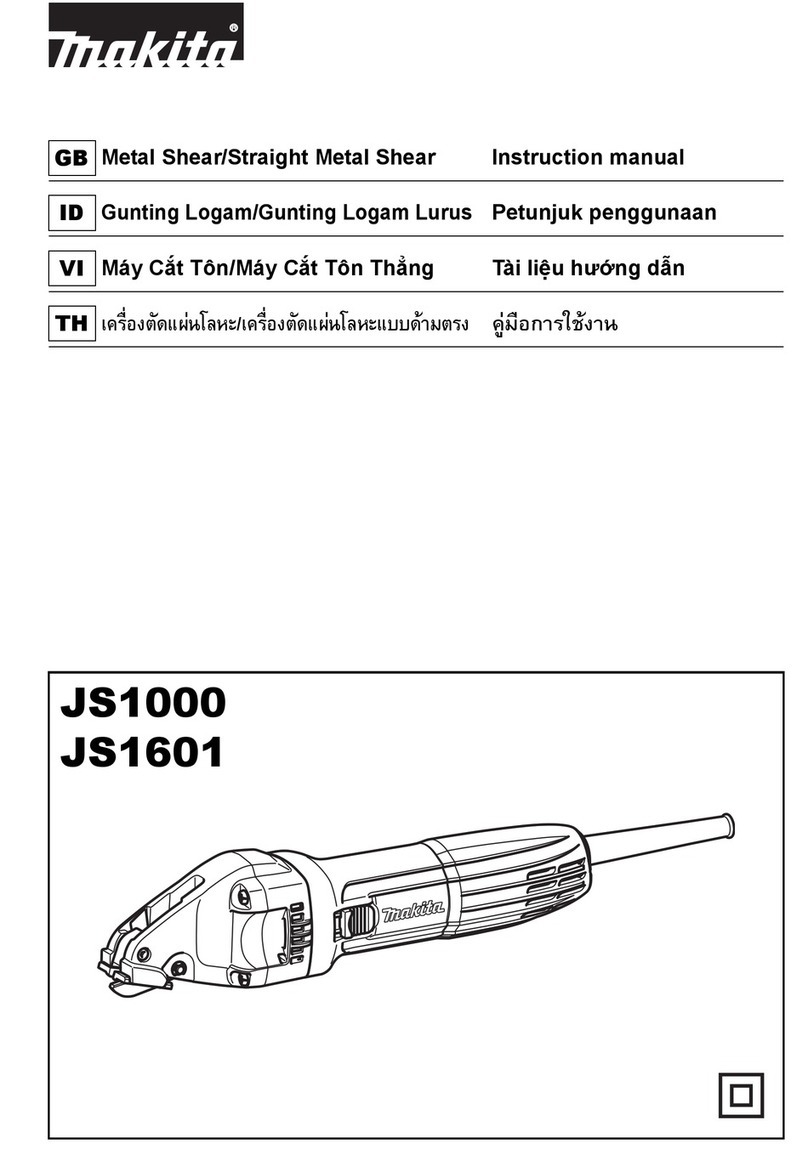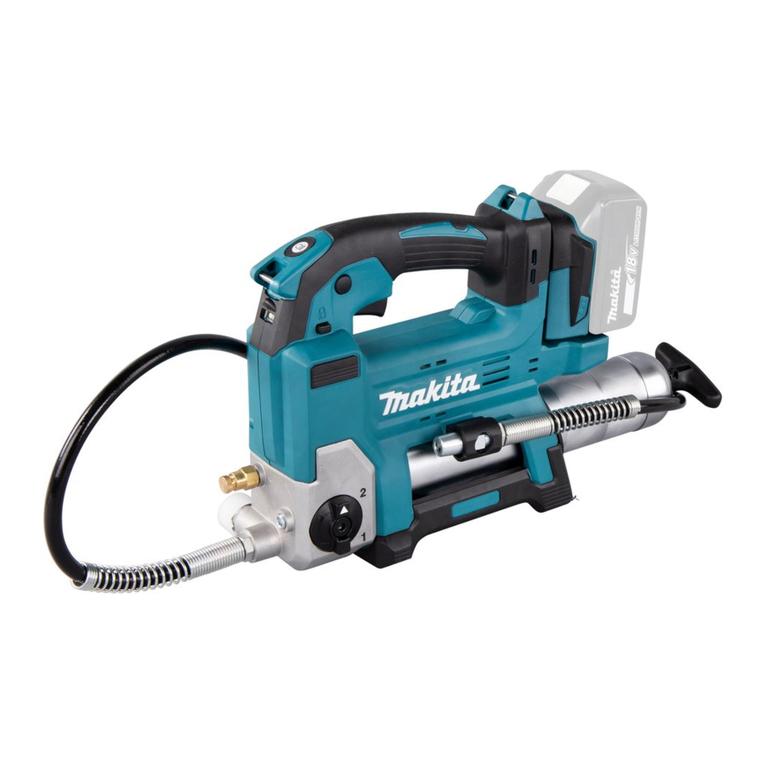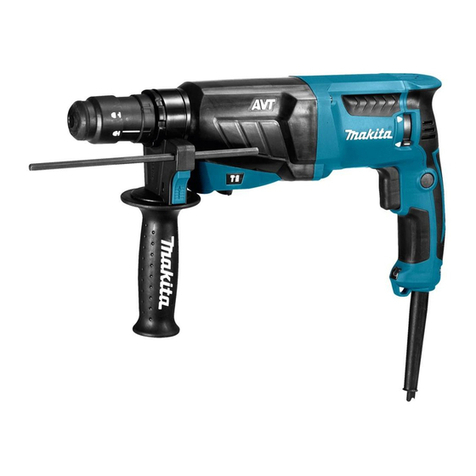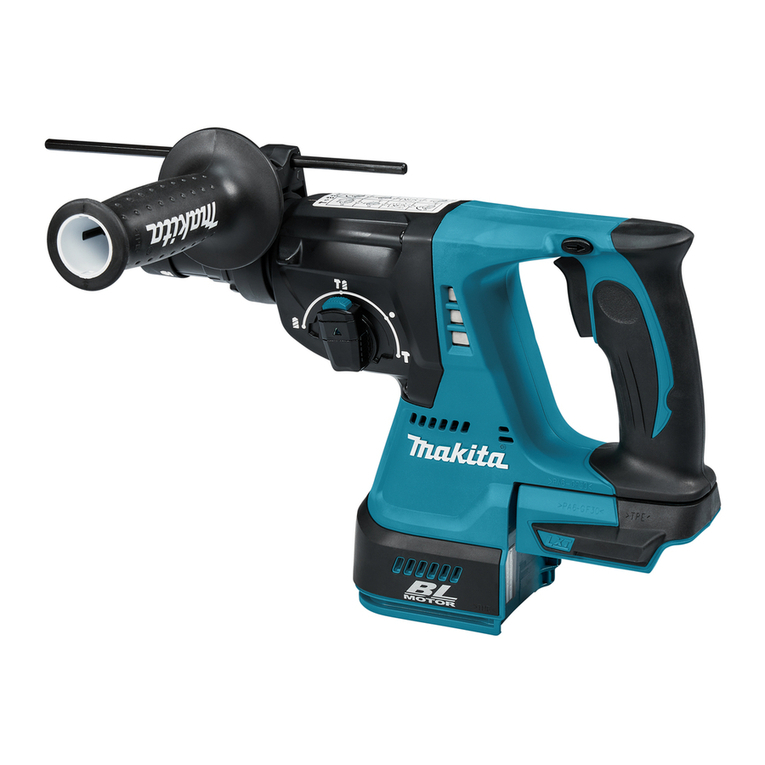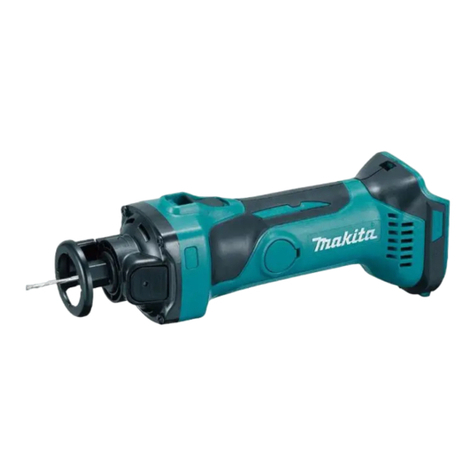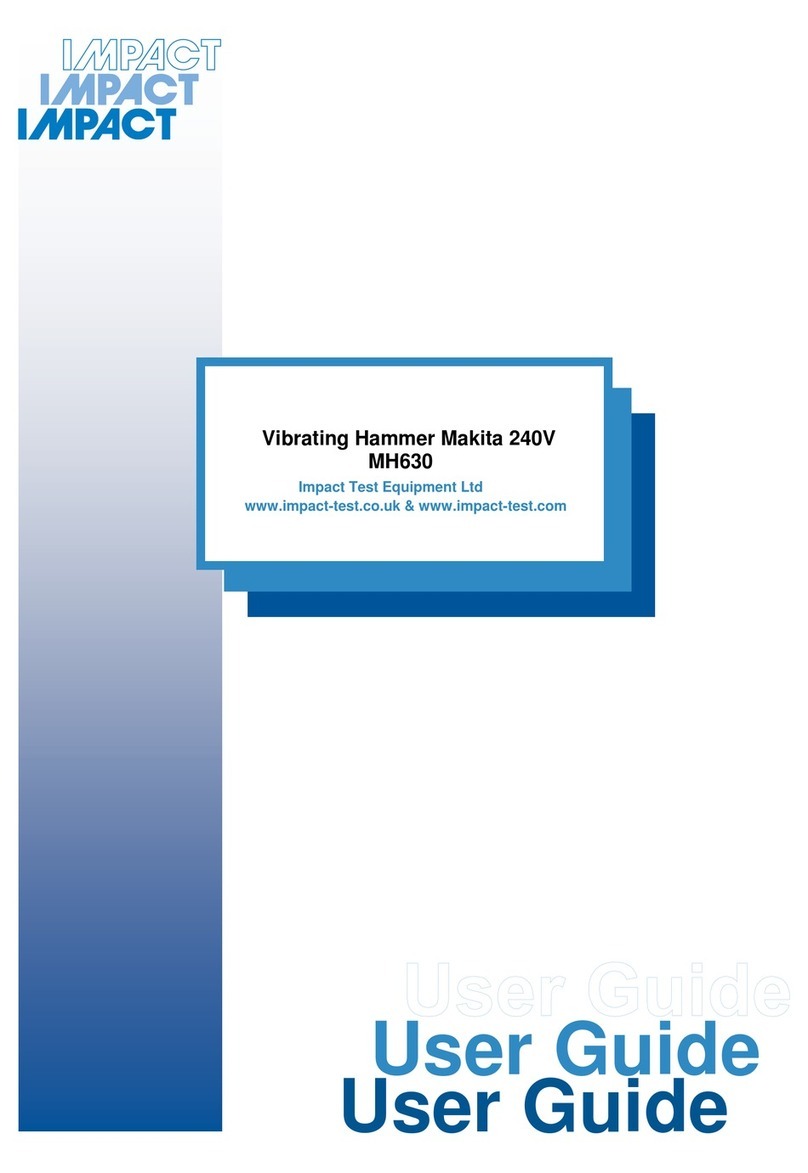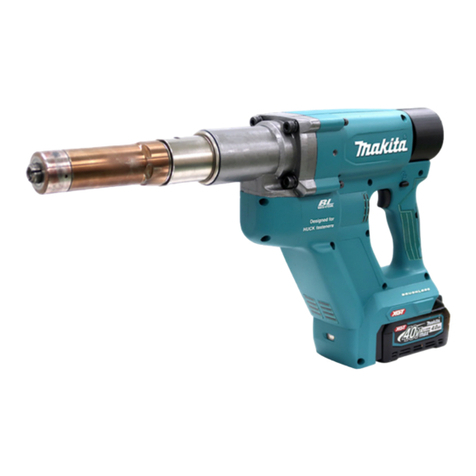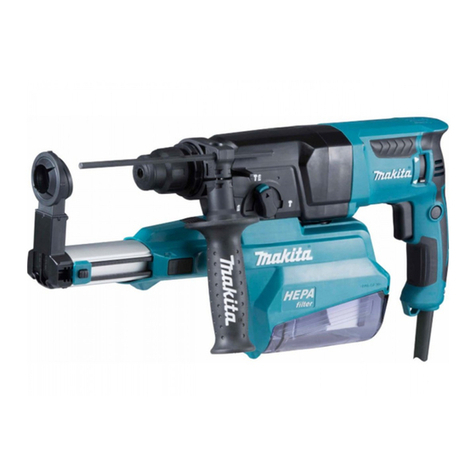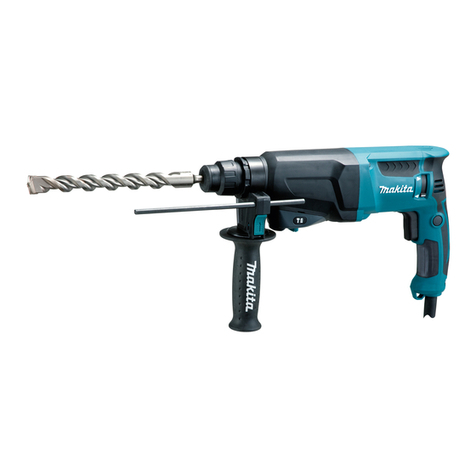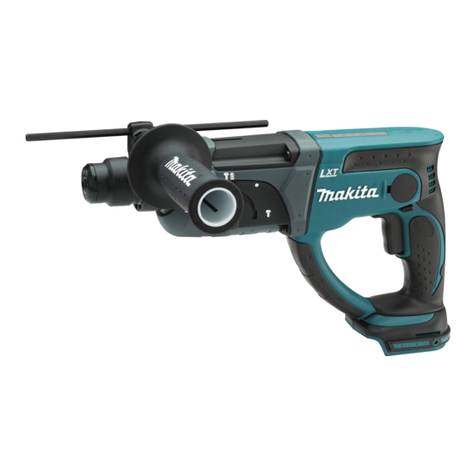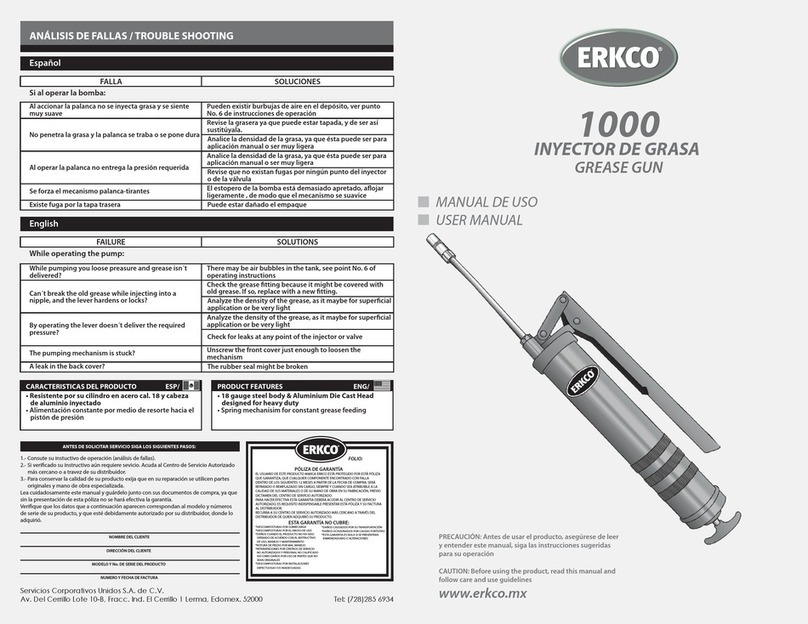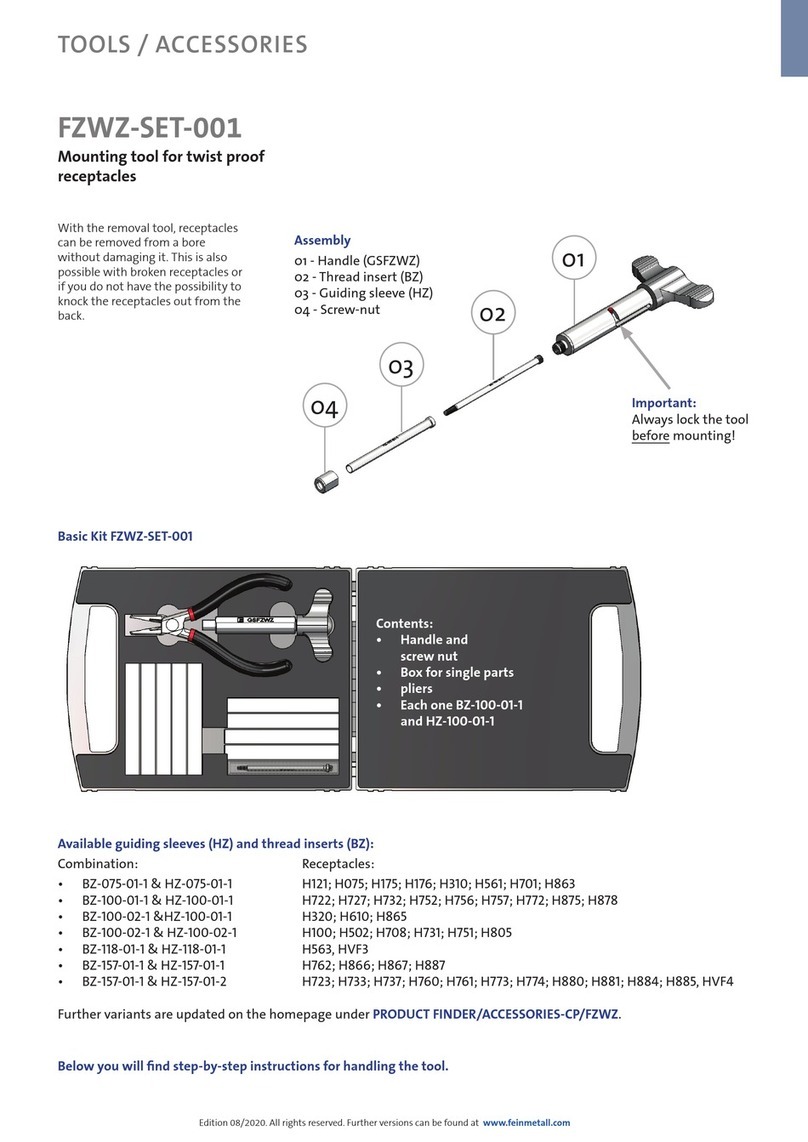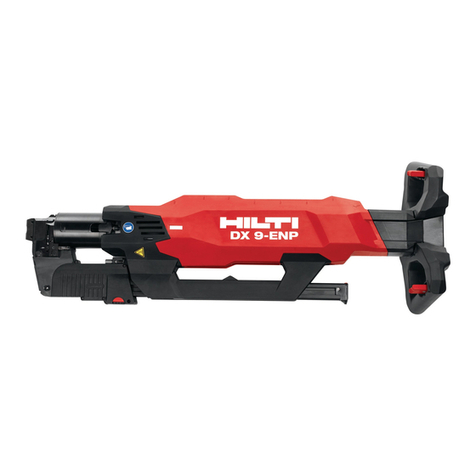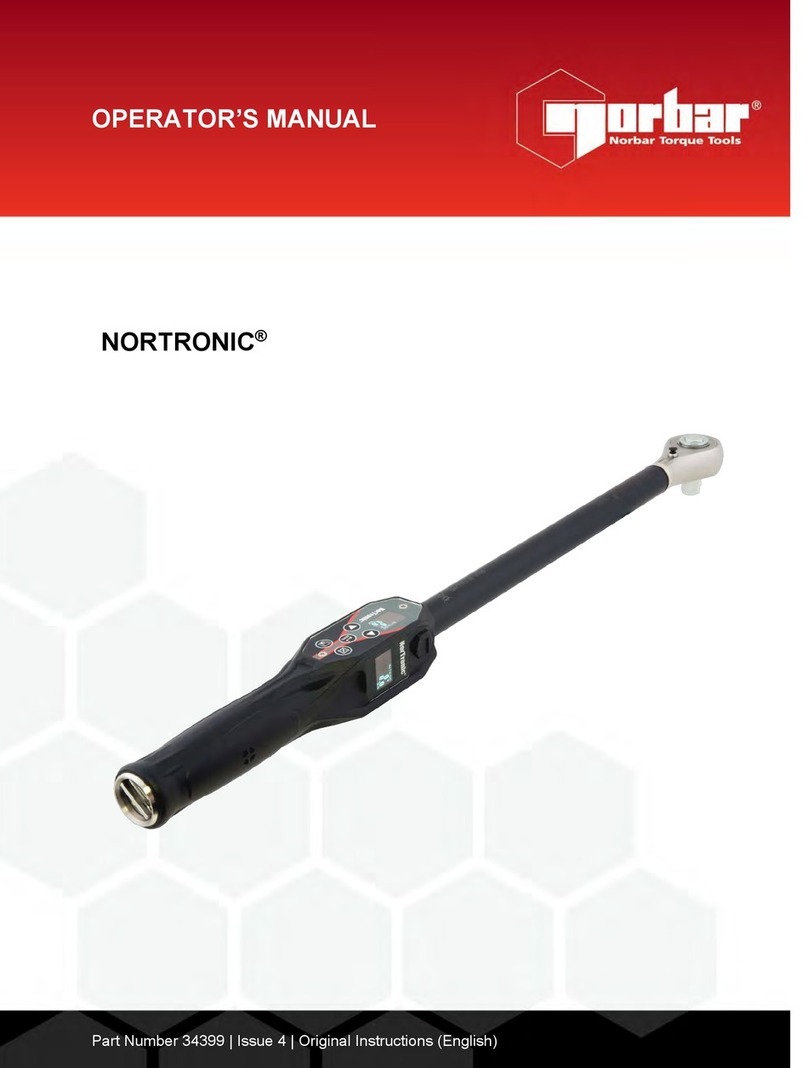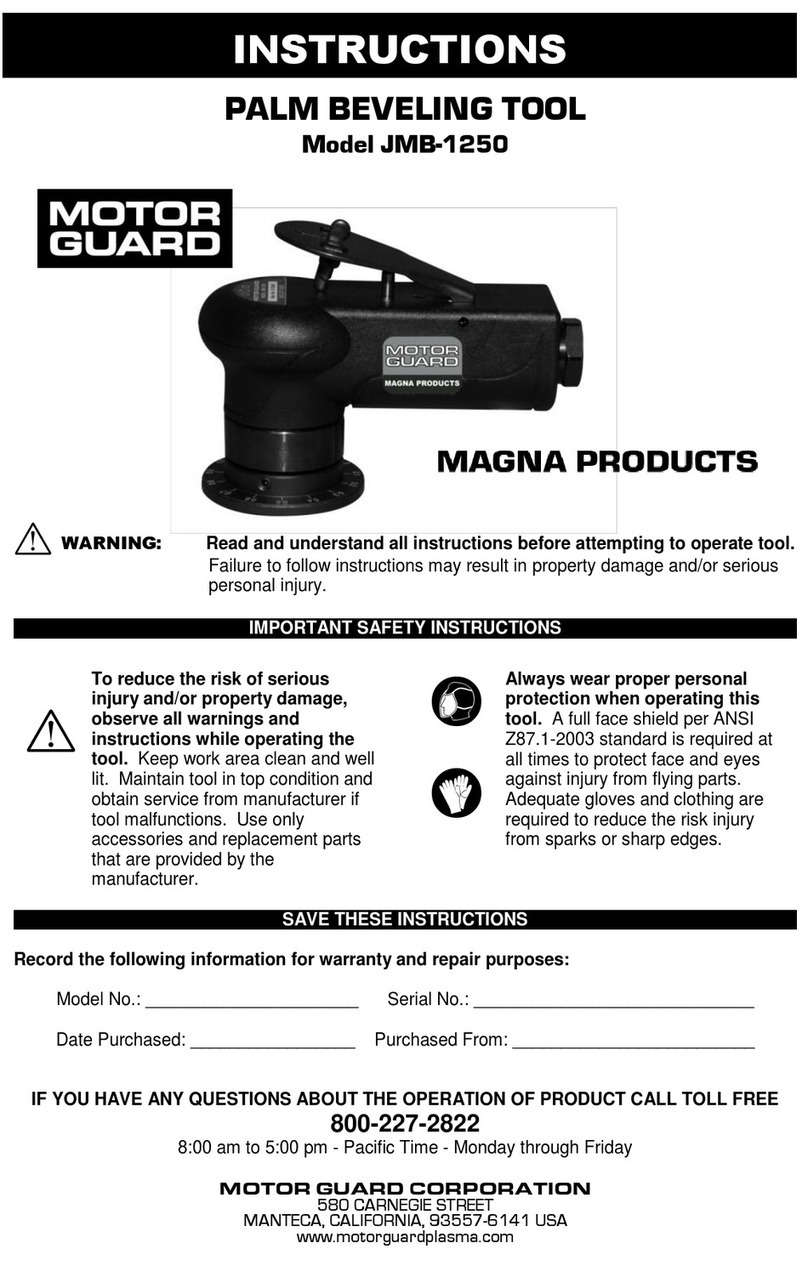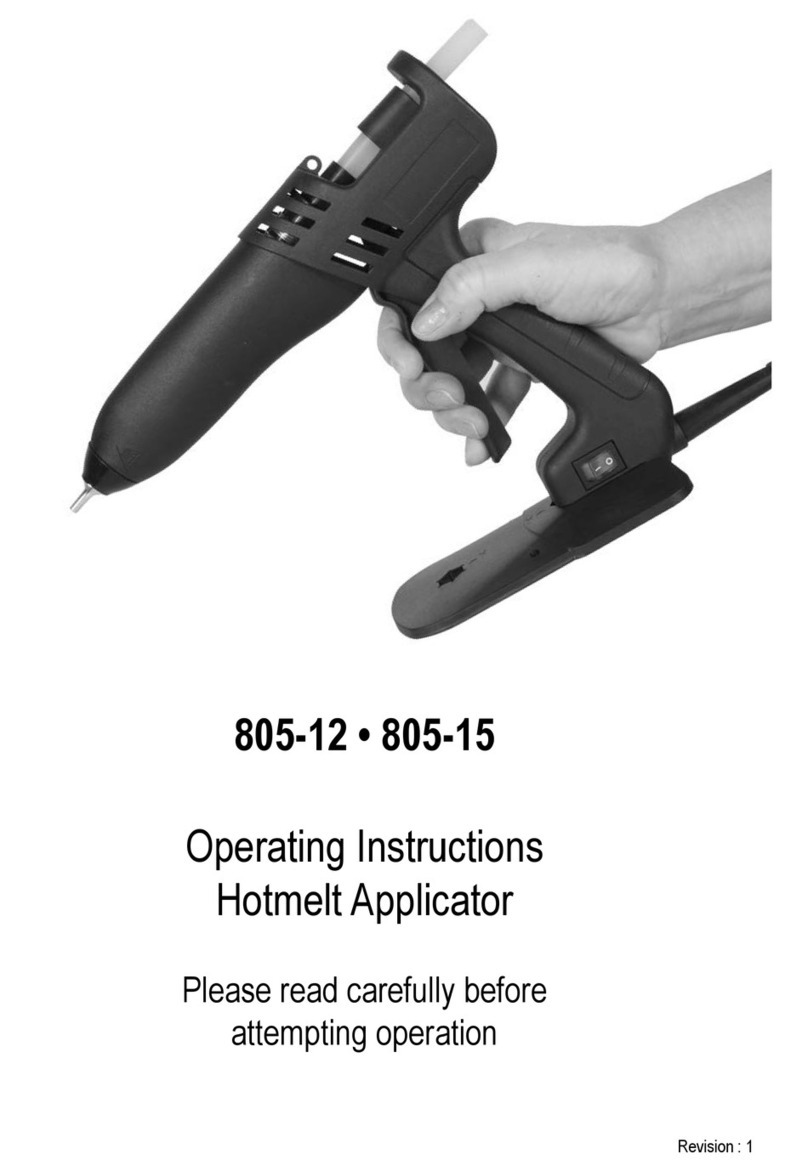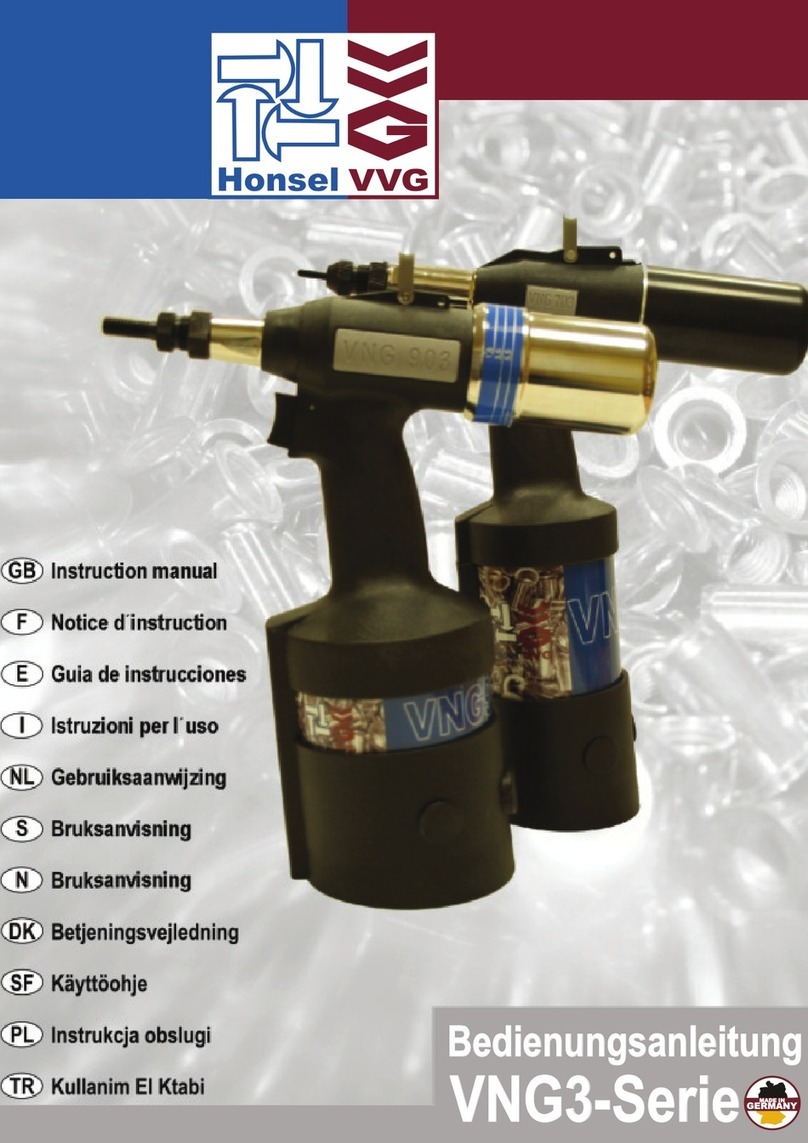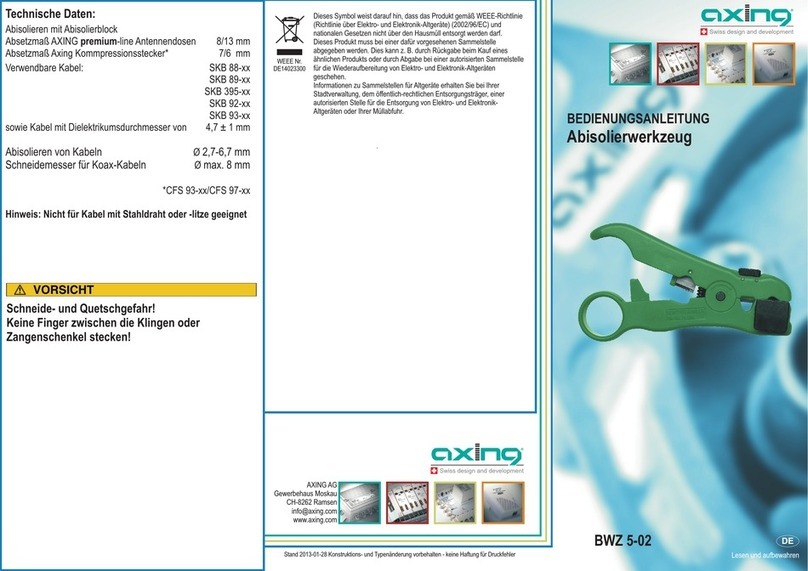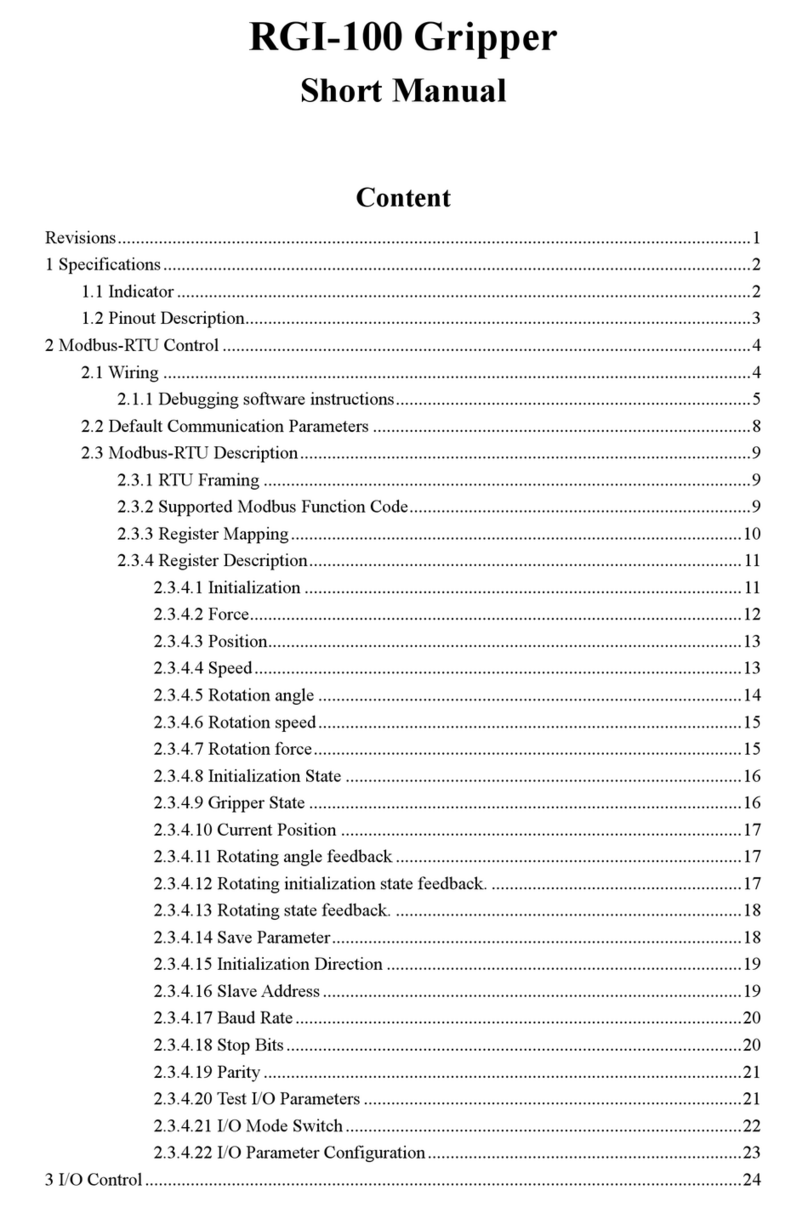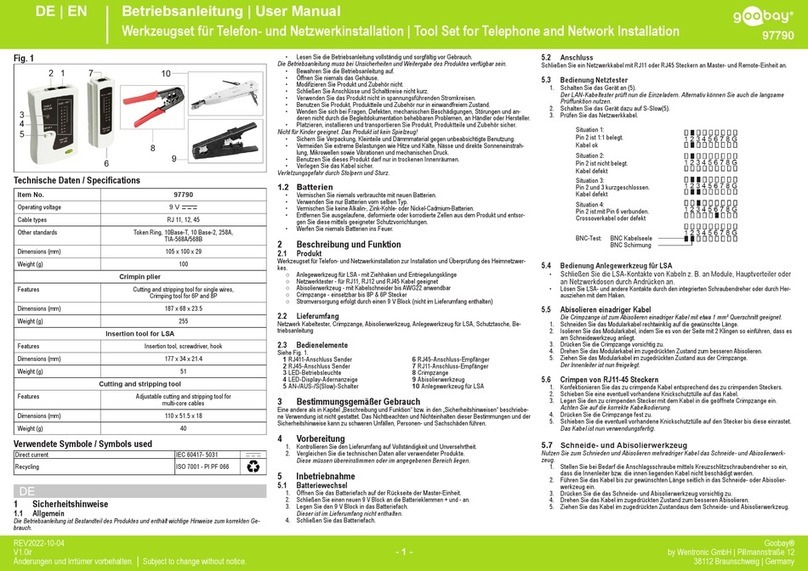
9ENGLISH
Vibration
The vibration total value (tri-axial vector sum) deter-
mined according to EN62841-1:
Vibration emission (ah) : 2.5 m/s2or less
Uncertainty (K) : 1.5 m/s2
NOTE: The declared vibration total value(s) has been
measured in accordance with a standard test method
and may be used for comparing one tool with another.
NOTE: The declared vibration total value(s) may also
be used in a preliminary assessment of exposure.
WARNING: The vibration emission during
actual use of the power tool can dier from the
declared value(s) depending on the ways in which
the tool is used especially what kind of workpiece
is processed.
WARNING: Be sure to identify safety mea-
sures to protect the operator that are based on an
estimation of exposure in the actual conditions of
use (taking account of all parts of the operating
cycle such as the times when the tool is switched
o and when it is running idle in addition to the
trigger time).
EC Declaration of Conformity
For European countries only
The EC declaration of conformity is included as Annex A
to this instruction manual.
SAFETY WARNINGS
General power tool safety warnings
WARNING: Read all safety warnings, instruc-
tions, illustrations and specications provided
with this power tool. Failure to follow all instructions
listed below may result in electric shock, re and/or
serious injury.
Save all warnings and instruc-
tions for future reference.
The term "power tool" in the warnings refers to your
mains-operated (corded) power tool or battery-operated
(cordless) power tool.
Cordless grease gun safety warnings
1. Hold the tool rmly.
2. Do not operate the tool near ame. The grease
may be ammable.
3. Use only grease that meets the specications
stated in this instruction manual. Installing a
dierent type of grease or any materials other than
grease may cause failure.
4.
Do not install any materials other than grease, such
as oil. It may spout out of the tool and get into eyes.
5. Do not carry the tool by the exible hose or the
rod handle.
6. Wear goggles when using the tool.
7. Check the exible hose before each use. Do
not use the hose if it is kinked or damaged. The
hose may be ruptured by high pressure and the
grease gets into eyes.
8. Make sure the rod is secured rmly. The rod
may move accidently and cause a pinching.
9. Read and follow the instructions of grease
manufacture before usage.
10. Keep hands and clothes away from the rod of
the rod handle. Otherwise your nger or clothes
may be pinched.
11. Wipe o grease adhering on the tool. Otherwise
it may cause slipping and result in an injury.
12. Do not bend the exible hose forcibly or stamp
it. Doing so may cause a breakage or deformation
of the hose.
13. Do not point the adapter at anyone in the
vicinity.
14. Use the exible hose only specied by Makita.
Use of any other hose might present a risk of
injury.
SAVE THESE INSTRUCTIONS.
Important safety instructions for
battery cartridge
1. Before using battery cartridge, read all instruc-
tions and cautionary markings on (1) battery
charger, (2) battery, and (3) product using
battery.
2. Do not disassemble or tamper with the battery
cartridge. It may result in a re, excessive heat,
or explosion.
3. If operating time has become excessively
shorter, stop operating immediately. It may
result in a risk of overheating, possible burns
and even an explosion.
4. If electrolyte gets into your eyes, rinse them
out with clear water and seek medical atten-
tion right away. It may result in loss of your
eyesight.
5. Do not short the battery cartridge:
(1) Do not touch the terminals with any con-
ductive material.
(2) Avoid storing battery cartridge in a con-
tainer with other metal objects such as
nails, coins, etc.
(3) Do not expose battery cartridge to water
or rain.
A battery short can cause a large current
ow, overheating, possible burns and even a
breakdown.
6. Do not store and use the tool and battery car-
tridge in locations where the temperature may
reach or exceed 50 °C (122 °F).
7. Do not incinerate the battery cartridge even if
it is severely damaged or is completely worn
out. The battery cartridge can explode in a re.
8. Do not nail, cut, crush, throw, drop the battery
cartridge, or hit against a hard object to the
battery cartridge. Such conduct may result in a
re, excessive heat, or explosion.

